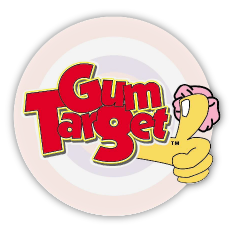Chewing gum packaging consists of multiple layers of plastic and foil, which are challenging to recycle due to their composite nature. These materials can take hundreds of years to break down, releasing harmful chemicals into the environment. This issue amplifies the waste problem, adding to the burden on already overwhelmed waste management systems.
Environmental awareness has surged over the past decade, with consumers demanding more responsible practices from their favorite brands. This has prompted many companies to rethink their packaging strategies, incorporating eco-friendly materials and reducing unnecessary waste. Several brands are now leading the charge in sustainable packaging innovations.
Biodegradable Materials and Recyclable Packaging
Biodegradable materials are designed to disintegrate safely and relatively quickly in natural environments, addressing the long-term waste problem associated with traditional plastics. Various biodegradable alternatives have been developed to replace conventional materials in packaging.
Made from renewable sources, paper-based wrappers decompose naturally and rapidly, reducing their presence in landfills and contributing less to environmental pollution. Bioplastic is derived from renewable resources such as cornstarch, sugarcane, and potato starch. Polylactic acid (PLA) is a commonly used bioplastic that decomposes in industrial composting conditions, breaking down into harmless substances like water and carbon dioxide. Cellulose, extracted from plant cell walls, is gaining attention. It can be processed into films that provide essential moisture barriers while being environmentally friendly.
The goal is to design packaging that can be easily processed through standard recycling systems, thereby minimizing the need for virgin materials and reducing waste. For packaging to be recyclable, it should be constructed from a single material, such as pure paper or specific kinds of plastic, which simplifies the recycling process. Simple design elements, such as minimalistic printing and reduced use of adhesives, enhance the likelihood that the packaging can be efficiently recycled.
Labels that provide straightforward recycling instructions can greatly increase participation in recycling programs. Manufacturers contribute to a circular economy where materials are continuously reused, reducing overall environmental impact.
Plant-Based Films and Coatings
Plant-based films and coatings represent a sustainable alternative to traditional synthetic packaging materials. These films and coatings are derived from renewable plant sources and have similar protective properties without the associated environmental issues of conventional plastics. Using plant-based materials significantly lowers dependency on nonrenewable resources and contributes to reduced carbon emissions.
Polylactic acid (PLA) is one of the prominent plant-based materials used for films and coatings. Produced from fermented plant starch, PLA is able and can be utilized in various applications, including food and beverage packaging. Cellulose is used to create films with excellent moisture and grease barrier properties. These cellulose-based films are biodegradable and compostable, making them highly suitable for sustainable packaging.
Made from natural starch, starch-based films offer good barrier properties and can be applied in multiple packaging contexts. Utilizing plant-based films and coatings aligns with the global movement towards greener practices in packaging and manufacturing.
 Edible Packaging
Edible Packaging
Edible packaging involves creating wrappers or containers that are safe to consume along with the product, effectively eliminating waste. This approach addresses one of the most pressing environmental challenges by ensuring that no leftover materials end up in landfills or oceans. The materials used in edible packaging are food-grade and pose no health risks. Common ingredients include seaweed, rice paper, and various starch-based compounds, which are not only biodegradable but also edible.
The advantage of edible packaging lies in its potential to reduce reliance on traditional packaging materials like plastic and aluminum, which are often non-biodegradable and harmful to the environment. Edible wrappers add an element of novelty and enjoyment to consumer products, potentially increasing the product’s appeal. Advances in this field are ongoing, and researchers are continually improving the sensory qualities of these materials, such as their taste and texture, to enhance the overall consumer experience.
The hurdle is ensuring that the packaging maintains its integrity and protects the product during transport and storage. The cost of producing edible materials can be higher than traditional options, which could impact pricing. As technology advances and scales, it is expected that these challenges will be mitigated, making edible packaging a more viable and widespread solution.
Reduction in Packaging Size
Smaller packages require fewer raw materials for production, lessening the environmental impact associated with manufacturing and distribution. This is particularly relevant in the context of the chewing gum industry, where traditional packaging involves excessive use of plastic and paper. Companies can reduce their carbon footprint and material costs without compromising product quality.
Lighter packaging results in lower transportation costs as more units can be shipped in a single load, reducing fuel consumption and emissions. Reduced packaging can lead to less storage space requirements, cutting down on warehousing costs. These savings provide a compelling incentive for manufacturers to adopt more streamlined packaging designs.
Many consumers are more likely to purchase products that use minimal and eco-friendly packaging. Companies can align with these consumer values, enhancing their brand image and fostering customer loyalty. The simpler the packaging, the easier it is for consumers to dispose of it properly, further contributing to environmental conservation efforts.
Refillable Containers
Refillable containers present an effective alternative to single-use packaging by promoting repeated use and longevity. These containers are made from durable materials such as metal or high-quality plastic, designed to withstand repeated refilling. Refillable containers can be compact and portable, making them convenient for everyday use while significantly reducing the amount of packaging waste generated.
Companies can develop a range of refill packs that can be conveniently purchased by consumers, creating a recurring revenue stream. Refillable containers can be designed to be aesthetically pleasing and functional, adding value to the consumer experience. While the initial investment in developing durable containers might be higher, the long-term environmental and economic benefits make it a worthwhile endeavor.
Collaboration and Innovation
Effective collaboration between manufacturers, suppliers, researchers, and regulatory bodies can accelerate the development and implementation of eco-friendly materials and processes. By sharing knowledge and resources, stakeholders can overcome the challenges associated with creating and scaling sustainable packaging solutions.
Joint efforts between gum manufacturers and material scientists can lead to the creation of advanced biodegradable or recyclable materials tailored to meet the specific needs of chewing gum products. Collaborations with universities and research institutions can provide valuable insights and drive innovation, resulting in more efficient packaging solutions that benefit both the environment and the industry.
Clear guidelines and standards for sustainable packaging can create an environment that encourages industry-wide adoption of eco-friendly practices. Regulatory support can help streamline the transition to sustainable materials and ensure compliance across the sector. Partnerships with environmental organizations and advocacy groups can further amplify these efforts, raising awareness and driving consumer demand for sustainable products.



